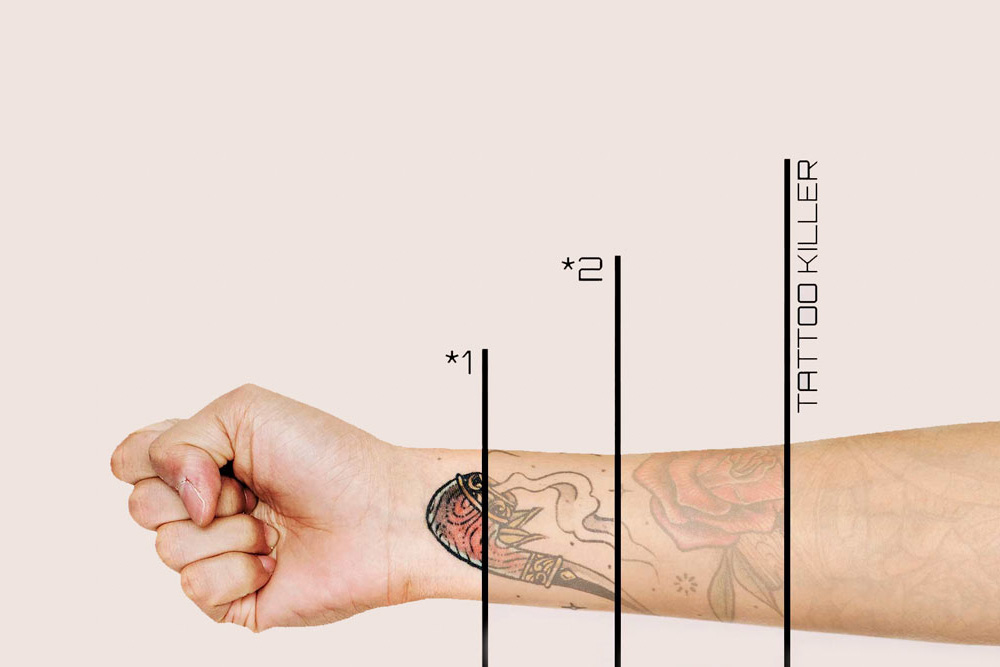
How many sessions do I need to remove a tattoo with a laser?
Removing a tattoo with a laser is an important decision, and often the first question that arises is: how many sessions will be needed?
The answer is not simple, as it depends on several individual factors. 🤐 Spoiler: Laser tattoo removal is a process that often requires multiple sessions.
Depth and density of the ink
One of the main factors influencing the number of sessions is the depth and density of the ink. Tattoos are applied to the dermis, a deep layer of the skin, with ink designed to be permanent. Laser removal works by breaking down the ink into smaller particles that the body’s immune system can eliminate. However, due to the density and depth of the ink, this process must be repeated several times to achieve optimal results.
Deeper tattoos, which reach deeper layers of the skin, may require more treatment sessions because the laser has to penetrate further to remove the ink particles.
Type and color of the ink
The type and color of the ink also play a crucial role. Dark inks, such as black and blue, are easier to fragment with lasers due to their high energy absorption. In contrast, lighter colors, such as yellow and green, are more resistant and may require more sessions. Multicolored tattoos are particularly challenging, as they may need different types of lasers to effectively target each color.
Skin type and healing ability
Skin type and the individual’s healing ability are important factors. Lighter skin types usually respond better to laser treatments because there is a greater contrast between the ink and the skin’s natural pigment. Darker skin types may require a more careful approach to avoid damaging the natural pigment.
The body’s healing ability also affects the number of sessions needed. Between each session, the skin needs time to heal, and the immune system needs time to remove the fragmented ink particles. This process can take several weeks, extending the overall duration of the treatment.
Immune system response
The immune system plays an essential role in tattoo removal. After the laser fragments the ink, the body’s immune system removes the ink particles through the lymphatic system. The efficiency of this process varies from person to person. A strong immune system can accelerate the removal of ink particles, potentially reducing the number of sessions needed.
Laser Technology
The laser technology used also influences the number of sessions. Modern lasers are designed to minimize skin damage while breaking down the tattoo ink. However, the ability of lasers to fragment the ink is limited by the energy they can apply without causing excessive skin damage. This means sessions need to be spaced 🕧appropriately to allow the skin to recover, which in turn can increase the number of sessions needed.
At Miki Tattoo Killer, we use the Ink Hunter Master and Ink Hunter Master Pro technology from Laser Light in all our laser services. This is currently considered the best equipment and the most recognized for tattoo and skin blemish removal.

If you want to know which machine we use at MikiTattooKiller, we recommend you read this article by clicking here.
Average number of sessions needed
In general, most people require between 6 and 10 sessions to remove a tattoo with a laser. However, this number can vary widely depending on the previously mentioned factors. Smaller, less dense tattoos may require fewer sessions, while larger, more complex tattoos may need more.
Additionally, it is crucial to note that results may vary, and some tattoos may not be completely removed, leaving a slight trace or shadow. For these cases, we recommend doing a cover-up; read more in our article about cover-ups by clicking here.
Determining how many sessions will be needed to remove a tattoo with a laser depends on multiple factors, including the depth and density of the ink, the type and color of the ink, the skin type, the healing ability, and the laser technology used.
Miki Tattoo Killer
Consult with our team at MikiTattooKiller, experienced professionals with over 10 years of experience, to get an accurate assessment and a personalized treatment plan. You can complete the contact form 📞 on our website, email us at info@mikitattookiller.com, or send us a message on WhatsApp.


